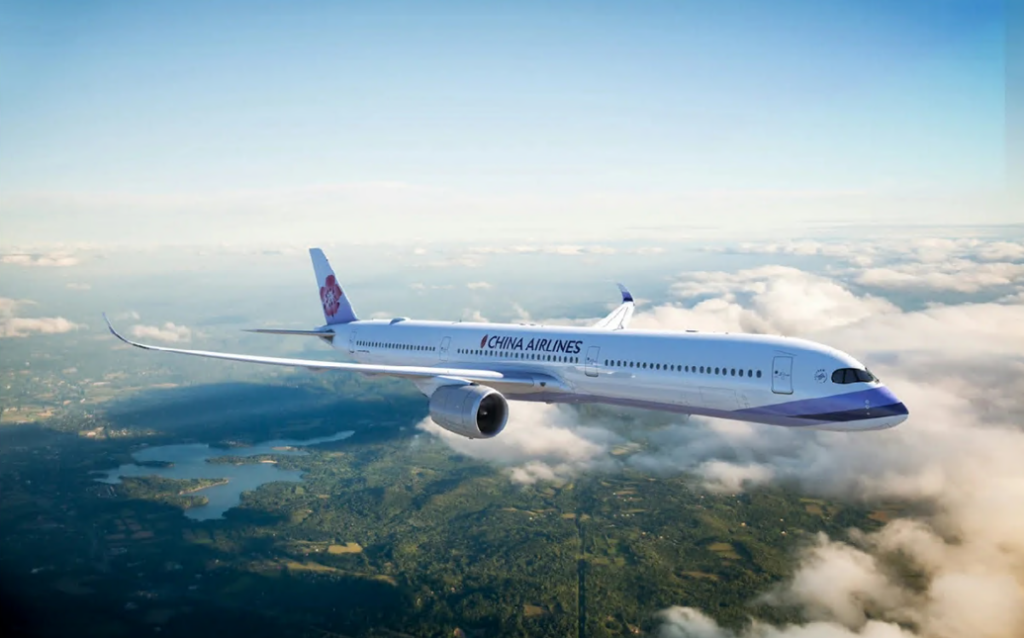Orders and Deliveries Soften Month-Over-Month to Start Q2 /// OEM Production Ramp-Up Timeline Still In Jeopardy


April 2025 Summary
Order activity in April slowed down drastically from the increase seen in March, while Boeing deliveries ticked up slightly compared to March and Airbus deliveries saw a slight decline from that same month. Boeing delivered a total of 45 aircraft in April, slightly higher than its 41 deliveries in March, whereas Airbus delivered 56 aircraft, a noticeable decline from the 71 it delivered in March, but much higher than the 25 and 40 aircraft it delivered in the first two months of the year. The stagnation and decline in deliveries of new aircraft comes as uncertainty regarding tariffs rippled throughout the commercial aerospace sector in the month of April. The stagnation in Boeing deliveries is likely attributed to tariffs. A number of China-destined MAX 8s were planned to be delivered to Chinese carriers but were flown back to the United States after the Chinese government prohibited Chinese carriers from taking Boeing deliveries. Boeing said it initially planned to deliver 50 commercial aircraft in the month of April.
The industry continues to face several headwinds that are clouding OEMs’ goals of rapidly ramping up production to meet demand. First, supply chain issues are still impacting production lines, and the addition of tariffs further complicates the outlook for the production ramp-up. Our current forecast for Airbus projects just over 821 deliveries in 2025, pushing a full recovery to pre-pandemic production levels into 2026. We consider this a best-case scenario, given Airbus’ guidance of 820 deliveries for the year, a 7.0% increase from the 766 aircraft delivered in 2024. We will re-evaluate this projection mid-year and potentially revise it based on Airbus’ delivery performance and progress throughout the year. Additionally, the outlook for Boeing production is similar. The company delivered a total of 350 commercial aircraft in 2024, a 33.7 percent decrease from the 528 aircraft delivered in 2023. We expect Boeing deliveries to return closer to 2023 levels this year, with around 570 aircraft being delivered in 2025. However, it is likely that we will revise this number downward if the current headwinds facing the industry continue to restrict increases in production rates.


Notes:
- A320neo numbers include all variants for the family; A319neo, A320neo and A321neo.
- Production rate targets do not represent the actual number of aircraft produced in April 2025. Instead, they are generalized figures based on current monthly production estimates derived from OEM guidance and internal research conducted by Forecast International.
Deliveries
The 45 Boeing jets delivered in April included 29 737 MAXs, one 737-800A, three 767s, four 777s, and eight 787s. Boeing’s month-to-month deliveries have been consistent throughout the year but have not significantly increased, with 45 aircraft delivered in January, 44 in February, 41 in March, and 45 in April. Additionally, Boeing is still struggling to reach its FAA-approved production rate of 38 737 MAX aircraft per month, producing only 31 MAX aircraft in April.
Boeing delivered only 29 737 MAXs in April, though the manufacturer could have delivered more aircraft than this monthly production rate, given that it held an inventory of 97 undelivered but already produced 737 MAXs as of the end of April. Boeing CEO Kelly Ortberg announced on the company’s 1Q 2025 earnings call that it plans to increase 737 MAX production to 52 aircraft per month but did not provide a timeframe. Forecast International believes this to be highly speculative and unlikely in the near term, considering Boeing still isn’t producing 38 MAXs per month. However, Forecast International believes Boeing will be able to reach this rate in the medium to long term due to the MAX’s strong backlog and continued orders for the aircraft.

As for its remaining programs, Boeing delivered only 21 787s from January 1 through April 30, 2025, and a total of eight 787s in the month of April. The manufacturer continues to aim for a production rate of seven per month by the end of the year and ten per month by 2026. While the 787 backlog of 828 aircraft supports these targets, Forecast International believes that the uncertainty caused by tariffs and ongoing supply chain issues is likely to delay progress toward ramping up 787 production.
The 767 program, on the other hand, remains steady at a rate of three aircraft per month, including a mix of KC-46 tankers and 767-300F freighters. Boeing is currently delivering the final 767-300Fs to FedEx and UPS ahead of the program’s scheduled conclusion in 2027, with 31 unfilled orders remaining as of April 30, 2025.
Meanwhile, the 777 program is producing three aircraft per month, with plans to increase to four per month by 2026. The first 777X delivery is still scheduled for 2026 to Lufthansa, and Boeing has eight MSN-specific units of 777Xs in production and four test aircraft. However, the aircraft is still awaiting certification, which Boeing expects to receive this year, although Forecast International believes it may be pushed into 2026. Boeing has also postponed the entry into service of the 777-8 freighter from 2027 to 2028.

In April, Airbus delivered 56 aircraft, including seven A220s, 43 from the A320neo family, two A330neos, and four A350s. This compares to a total of 71 aircraft delivered in March. The decline may be linked to uncertainty that emerged in April surrounding tariffs. However, we do not currently interpret this as a sign of a broader slowdown in production or deliveries. For our outlook to change, we would need to observe a consistent month-over-month decline in deliveries through the end of the summer. At this point, our view remains aligned with Airbus’s full-year guidance.
Although A320neo family production and deliveries slowed in April, with only 43 aircraft delivered and just 40 produced, Airbus has reaffirmed its target of increasing production to 75 aircraft per month by 2027. Whether this goal is achievable will largely depend on the strength of the supply chain. However, Forecast International maintains that the current backlog supports this level of output over the long term but believes Airbus is currently unlikely to reach this production rate by its 2027 target.

As for the A220 program, Airbus is currently producing between six and eight aircraft per month, with a stated goal of reaching 14 per month by 2026. However, this target may be overly ambitious given the current backlog of only 491 aircraft and a historical average of 95 gross orders per year since 2018. At that pace, the backlog would be exhausted in just over three years, making it difficult to justify such an aggressive production increase over the long term without a significant boost in new orders. That said, we continue to monitor A220 production, which has shown encouraging signs. Airbus delivered ten A220s in March, which signals positive momentum. We believe it is possible that production could reach approximately ten aircraft per month by the end of 2026, though this will depend heavily on improved health of the supply chain.
Due to supply chain disruptions at Spirit AeroSystems, production of the A350 is now capped at six per month for the remainder of 2025. Though only four A350s were delivered in April, Airbus produced a total of seven A350s, slightly higher than its stated limit. Airbus also postponed the first A350F delivery to 2027, a year later than initially planned. Meanwhile, A330neo production remains steady at around three to four aircraft per month, with no plans for near-term increases and two deliveries recorded in April.

Orders
April saw a significant slowdown in order activity. Boeing recorded only eight gross orders in April, all of which were for the 737 MAX. Additionally, no order cancellations were booked. For consistency, this article does not include Boeing’s ASC 606 accounting adjustments and considers net orders as gross orders minus cancellations.

Airbus orders also significantly slowed down compared to previous months, receiving only 11 gross orders in April, and no cancellations, resulting in 11 new orders. Of these 11, one was an A321neo for an undisclosed customer and 10 were A3500-1000s for China Airlines. We expect this sharp drop in orders to be short lived, as operators are likely preparing to place their largest orders of the year during the Paris Airshow in June, in which order activity is expected to increase during this period. However, it is also possible that a broader decline in commercial aircraft orders could emerge as the year progresses. As operators assess the implications of tariffs, particularly in relation to fleet expansion and modernization, reduced demand may prompt a more cautious approach to capital investment, limiting orders of new commercial aircraft.


Backlog

- Airbus backlog numbers do not include A320ceo or A330-200 ghost orders.
- Boeing backlog numbers do not include 737-700, 737-800 or 777-300ER ghost orders.
- A320neo numbers include all variants for the family; A319neo, A320neo and A321neo
As of April 30, 2025, Airbus reported a backlog of 8,668 jets, excluding the A320ceo family and A330-200, of which 7,705—or 88.9 percent—were A220 and A320 family narrowbodies. Meanwhile, Boeing’s total unfilled orders (before ASC 606 adjustments) stood at 6,273 aircraft, excluding the 737-700, 737-800 and 777-300ER, with 4,742, or 75.6 percent being 737 MAXs. Airbus’ backlog represents 10.4 years of production based on Forecast International’s 2025 production estimates, while Boeing’s backlog would last approximately 11 years.
These figures are unusually high, highlighting the ongoing challenges Airbus and Boeing face in ramping up production. With continued uncertainty around tariffs and persistent supply chain constraints, the timeline for scaling up production remains unclear for both manufacturers. Forecast International continues to monitor these developments closely and will provide an additional update at the beginning of June. For more detailed insights or to discuss how these developments might impact your business, reach out to our team today.


Meet Us at the Paris Air Show
Join Forecast International at the Paris Air Show and gain firsthand insight into the trends shaping the global aerospace market. From navigating supply chain challenges to analyzing the Airbus-Boeing rivalry and the rise of new regional players, our team delivers the industry’s most trusted intelligence and long-range forecasts. Whether you’re focused on commercial, business, or general aviation, stop by Hall 3 Booth C164 to discover how our expert analysis can elevate your strategic planning. 👉 Book time with Grant in Paris: https://lnkd.in/ekijrXhE
With diverse experience in the commercial aviation industry, Grant joins Forecast International as the Lead Analyst for Commercial Aerospace. He began his career at the Boeing Company, where he worked as a geospatial analyst, designing and building aeronautical navigation charts for Department of Defense flight operations.
Grant then joined a boutique global aviation consulting firm that focused on the aviation finance and leasing industry. In this role he conducted valuations and market analysis of commercial aircraft and engines for banks, private equity firms, lessors and airlines for the purposes of trading, collateralizing and securitizing commercial aviation assets.
Grant has a deep passion for the aviation industry and is also a pilot. He holds his Commercial Pilots License and Instrument Rating in addition to being a FAA Certified Flight Instructor.





